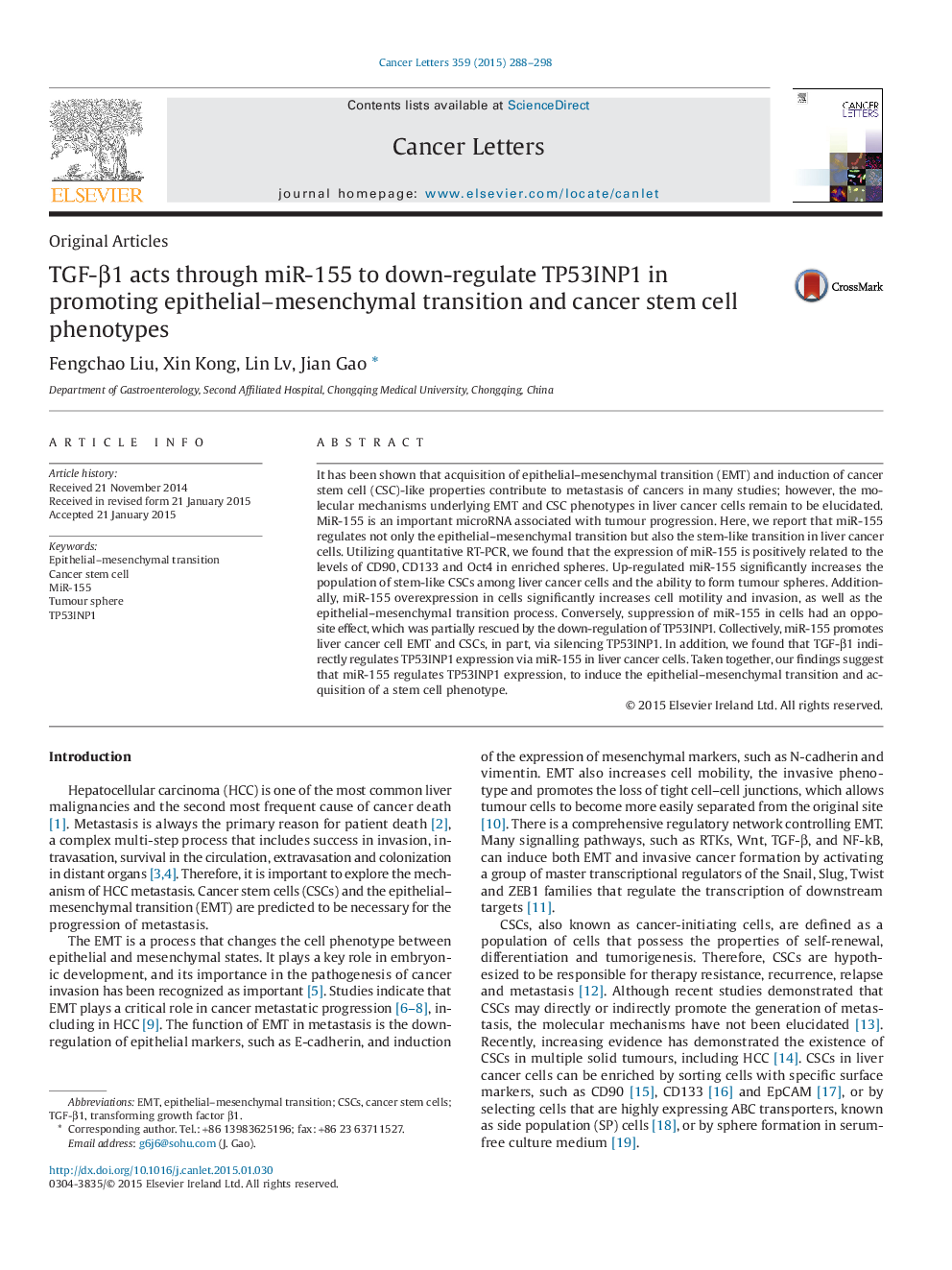| Article ID | Journal | Published Year | Pages | File Type |
|---|---|---|---|---|
| 2112524 | Cancer Letters | 2015 | 11 Pages |
•MiR-155 is positively related to the levels of liver cancer stem cell markers CD90, CD133 and Oct4 in enriched spheres.•MiR-155 regulates the migration and invasion of liver cancer cells.•MiR-155 regulates liver cancer cell EMT and acquisition of CSCs via direct targeting of TP53INP1.•TGF-β1 indirectly regulates TP53INP1 expression via miR-155 in liver cancer cells.•Overexpression of TGF-β1 in spheres and extracellular TGF-β1 induces intracellular TGF-β1 expression.
It has been shown that acquisition of epithelial–mesenchymal transition (EMT) and induction of cancer stem cell (CSC)-like properties contribute to metastasis of cancers in many studies; however, the molecular mechanisms underlying EMT and CSC phenotypes in liver cancer cells remain to be elucidated. MiR-155 is an important microRNA associated with tumour progression. Here, we report that miR-155 regulates not only the epithelial–mesenchymal transition but also the stem-like transition in liver cancer cells. Utilizing quantitative RT-PCR, we found that the expression of miR-155 is positively related to the levels of CD90, CD133 and Oct4 in enriched spheres. Up-regulated miR-155 significantly increases the population of stem-like CSCs among liver cancer cells and the ability to form tumour spheres. Additionally, miR-155 overexpression in cells significantly increases cell motility and invasion, as well as the epithelial–mesenchymal transition process. Conversely, suppression of miR-155 in cells had an opposite effect, which was partially rescued by the down-regulation of TP53INP1. Collectively, miR-155 promotes liver cancer cell EMT and CSCs, in part, via silencing TP53INP1. In addition, we found that TGF-β1 indirectly regulates TP53INP1 expression via miR-155 in liver cancer cells. Taken together, our findings suggest that miR-155 regulates TP53INP1 expression, to induce the epithelial–mesenchymal transition and acquisition of a stem cell phenotype.
